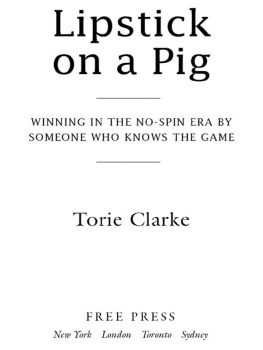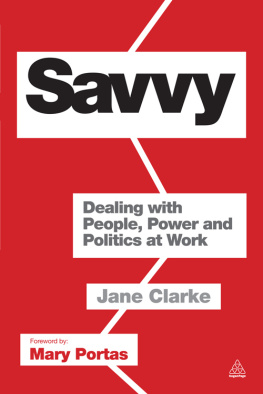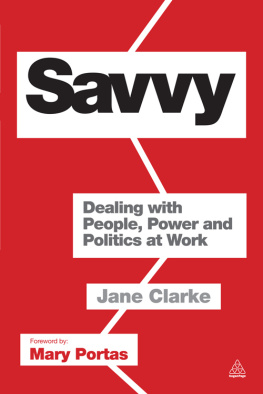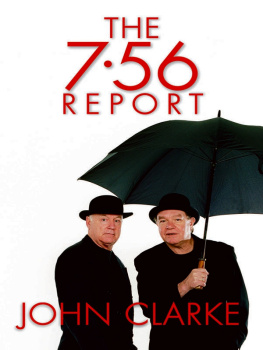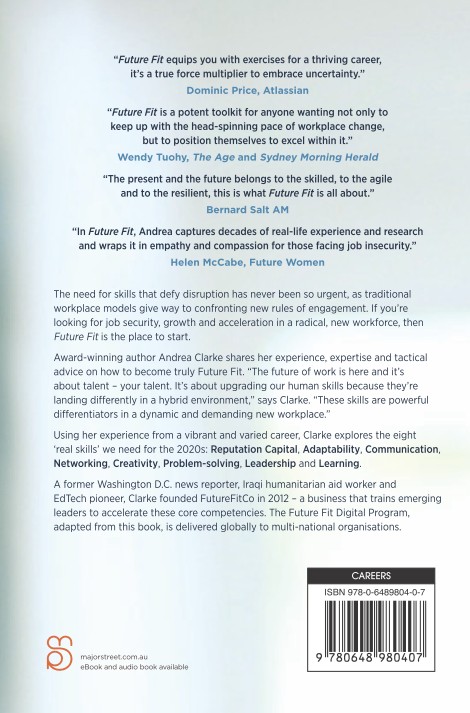Acknowledgements
Theres no greater privilege than working in a field which allows you to speak with the smartest people in the room as well as people on the frontline of real social issues those with the power to instigate change and those with first-hand experience of why change is required.
Its an honour I do not take for granted and continue to enjoy, even after officially leaving my journalism career in 2012. Being a storyteller in any format gives you professional licence to be endlessly curious, explore all sides of a story, pursue outlier trends, excavate your way into a content mountain without permission and hopefully to return with an idea that genuinely moves your audience forward in some small way that matters.
I have been consistently moved by a diverse and sometimes confronting journalistic and human rights career, but nothing feels as rewarding as having been able to share my ideas and expert information in this book with the intention of empowering the reader.
To the entire FutureFitCo Alumni and everyone with whom I have connected on this journey, thank you for being part of a micro-movement towards supporting people to reach their potential, fearlessly and well-equipped.
For almost a decade weve lifted one another to recognise our value, take control of our careers, speak up with impact, negotiate our way to well-earned promotions and role-model our interpretation of modern leadership to everyone around us.
Meeting you while delivering hundreds of workshops, speaking engagements and book signings has taught me so much about the energy that is activated in us all when were in the same room with like-minded, open-hearted people. When we feel safe to share our own story and were presented with tactical ways with which to accelerate our capability and our confidence, our drive towards personal transformation cannot be derailed.
Being part of your collective journey is something I reflect on routinely with immense gratitude. Here is my latest contribution to you, updated and reinforced with fresh information for changing times. My hope for this book is that it helps launch you from thinking into action.
1
Bombshell in Baghdad
Choose courage over comfort... And choose the great adventure of being both brave and afraid. At the exact same time. BREN BROWN
Stand by for a rapid descent!
Its not a phrase you ever dream of hearing, but its what I heard early in the morning of 28 September 2008 when I found myself sitting halfway down from the cockpit of a UN charter jet, flying into a war zone over Baghdad, Iraq. The adrenalin surging through me was explosive, when the 30-seat plane suddenly banked hard to the left and began a free-fall nosedive towards the scorching sands of the Iraqi desert.
I wish I could say the experience forced me to face some profound epiphany about life or our purpose on this planet, but it didnt. My only reaction was to let out a calm but very concerned Oh my God!, as I prepared myself for the distinct possibility of a fiery death in a plane crash over Iraq.
Now, heres the thing about an aircraft in the middle of a nosedive from 20,000 feet the sound of the engine shifting gears to speed up and slow down is legitimately alarming. This was no standard commercial flight, where the pilots job was to make the journey as smooth as possible. I was the only passenger on the dangerous hop from Amman, Jordan to Baghdad, but at no time on this flight did the pilot offer words of reassurance.
With only the smooth sound of John Mayer playing through my headphones and my laser-focused pilot in front of me for company, I watched the desert rush towards us and suddenly realised how a skydiver must feel, if the parachute fails to open. What I found strange (other than the obvious) was where a persons mind goes when faced with such a dramatic experience. I found myself captivated by the lines that divided up the desert below. I was a sky-high witness to a desert puzzle. There I was, screaming vertically towards an active war zone, and I was curious about lines in the sand.
Under normal circumstances, Im not even close to being afraid of flying. Quite the opposite: I love it. I grew up flying with my dad on many weekends and school holidays when I was a kid. My father ran a rapidly expanding business involving trucking haulage, so having a light aircraft was more of a necessity than a luxury for him in the early 1980s, when he needed to cover extreme distances around regional Queensland. Dads first plane was a Cessna 172 an American, four-seat, single-engine, high-wing, fixed-wing aircraft. Since we were too young to sit up front, my two sisters and I sat in the back seat, obeying Dads one rule: no shenanigans. If we could have only followed this rule in life on the ground, Im sure we would have made our parents (and each other) a lot happier.
A few years later Dad upgraded to a Cessna 182, before finally settling on the Cessna 210, to accommodate the increasing luggage of his three teenage daughters. (Only pack what you can carry was a routine instruction, which would turn out to be a life mantra.)
We loved the new plane, not because of the size of it or because Dad flew it himself across the Pacific Ocean from Hawaii. We loved it because the wheels retracted after take-off. We all felt a deep sense of ease and adventure with flying, so Ive never really shared the common fear of commercial aviation. That being said, neither had I ever been a passenger flying over a heavily monitored military airspace, dropping 20,000 feet in a matter of minutes.
Back to Baghdad
At the time of my descent, Baghdad International was the most heavily defended airport in the world. While I knew that, there was still plenty to be concerned about. If you wanted to land in Baghdad in one piece, the landing had to resemble a skydiving halo drop a high-altitude, low-opening jump from 25,000 feet in an attempt to remain undetected. Insurgents were stationed right outside the protected airspace, armed with surface-to-air missiles, and perfectly willing and able to blow up civilian or military aircraft with a single shot.
The anxiety of the situation was real, so I switched to a Navy SEAL box breathing technique to slow my heart rate breathe in for four seconds, hold for four seconds and then exhale for four seconds. Its incredibly simple and very powerful. When we take deliberate control over our breathing, we control our nervous system to bleed off excess stress. Beyond the obvious benefit of reducing angst, when you stack this with a positive vocal mantra (in this case: I am completely safe) it allows you to focus and conserve energy instead of haemorrhaging adrenalin that youll likely need.
As the ground raced up towards us, I was suddenly pulled to the left. In an expert simultaneous manoeuvre, which made me think my pilot was a fighter pilot who was either retired or moonlighting for the UN, the pilot hit the air brakes and steered the aircraft into a tight downward spiral.
Normal landings can take miles to execute, but in a war zone you dont have that luxury or the time. Think of it this way: landing in such a small zone would be similar to trying to land your plane into a tall glass of water. Having a basic understanding of aviation, I knew that the spiral technique was the only way to come out of a nosedive without leaving the protected airspace.
When the spiralling moves finally ended, which felt like the hard banking of a roller coaster ride at an amusement park, my pilot pulled out of the rotation, levelled the nose of the aircraft and started our final approach. This might sound crazy, but final approach was more dangerous than nosediving 20,000 feet. At this airspeed, which was around 180 knots, we were at our most vulnerable. The faster the speed, the harder it was to hit us with a missile. So we were a slow-moving duck at the start of hunting season. If youre going to land at the worlds most protected but dangerous airport, ideally you do it as fast as possible.
Next page



